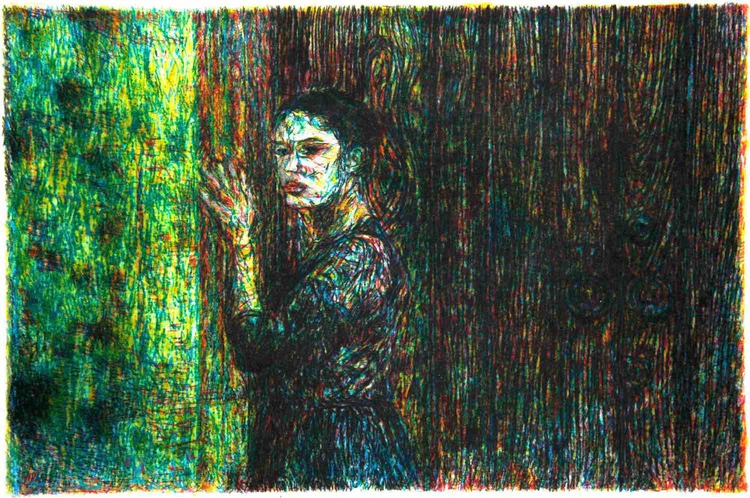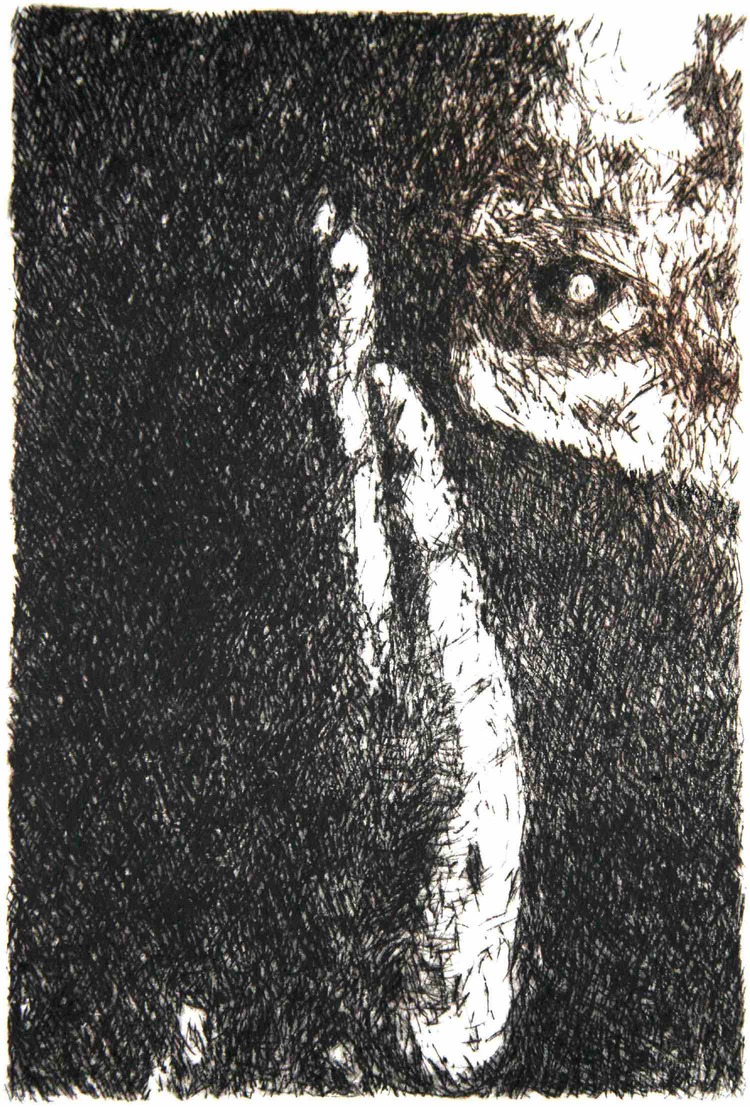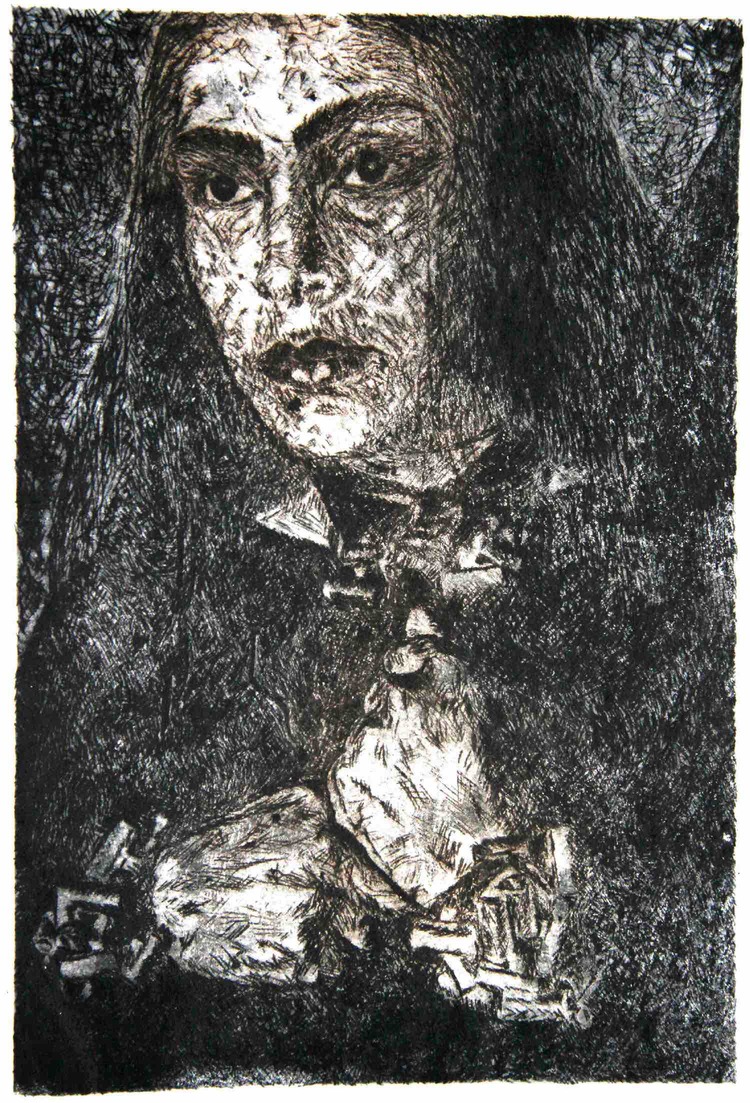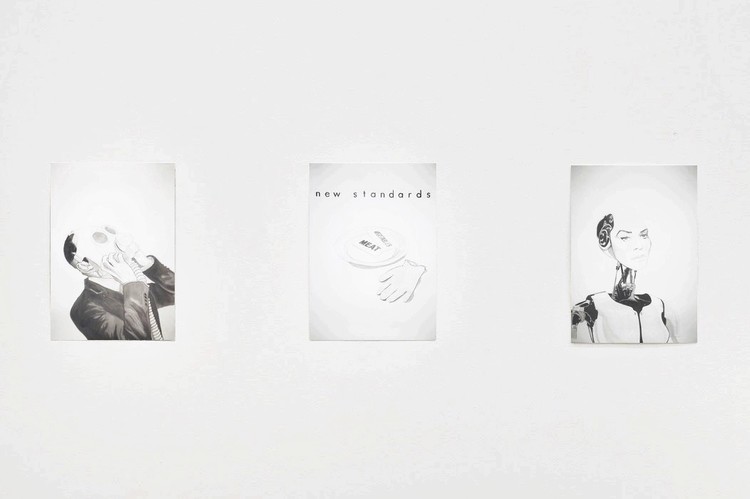Letting the silent speak: SUNARA BEGUM & DUNSTAN PERERA



Visual artists Sunara Begum and Dunstan Perera host their new exhibition at The Crypt: Retracing the Eye: Giving a Voice to the Voiceless.
Here, Sunara Begum and Dunstan Perera create a visual exploration of the work of influential photographer Margaret Cameron. Positioned in the stunning location of The Crypt; the 18th century architecture and brick vaulted ceilings will serve as the perfect atmospheric backdrop for this new exhibition.
Begum engages with culture in all her work, desiring to tell stories through her visual interpretations and in doing so, forming connections between the past and the present. These two artists collaborate together to re-awaken the meaning behind the images of this influential English photographer.
Julia Margaret Cameron was born in Calcutta over 150 years ago. This exhibition explores the photographs she took in her later life whilst living in Ceylon; as she captured people forever in a frame of silence. Begum and Perera let the silent speak once more, exploring these photographs and their subjects and setting free the unspoken narratives within.
Displaying not only photography but etches and wood-cuts, these visual pieces once again inject life into Cameron’s work, tracing the past and relating it back to the voices of the present. Blurring the boundaries of time, the artists cast new perspectives and interpretations on to Cameron’s collection.
The exhibition runs from the 29th September to 12th October at The Crypt Gallery, St Martin in the Fields.
Hand-stitched & tea-stained: The creations of MISTER FINCH
When it comes to subject matter, textile artist Mister Finch finds himself drawn to woodland specimens and whimsical beasts like a moth to a flame.




While the pieces created by Leeds-based artist Mister Finch look as if they were plucked straight from a forest, they are not of your common garden variety. Reminiscent of vintage botanical illustrations and evoking the charm and enchantment of a storybook, one might expect to see the artist’s flora, fauna, and fungi specimens mounted behind glass or displayed in a bell jar. This is because Finch, who goes solely by his remarkably fitting surname, seeks to “create specimens that look like they have been collected from somewhere else”. Moths sporting wings of fleshy velvet, cobwebs comprised of twiddled nylon, and speckled textile magpies are among his enchanting body of work, whose components Finch has described as “fairytale samples”.
Due to the astonishing level of care and detail apparent in his art, one may be surprised to hear that Finch is entirely self-taught when it comes to sewing, as he “works alone and makes everything himself by hand”. By combining his hand-sewn vintage textile bodies with unwanted objects found at car boot sales and thrift shops, Finch is able to create exquisite works that both transcend reality and remain down-to-earth. Old postcards become specimen mounts, while “a lonely chess piece or a stray bead” suddenly sprouts a purpose. While Finch is typically busy as a bee sorting out new homes for his creatures, he does, occasionally, grow attached and keep them for himself — like Oonah, a moth with “a beautiful white fur body and carpet for wings” who’s now perched on a wall in his “studio full of books, glass jars, and naughty cats”.
Interested in these delightful creatures but not near Mister Finch’s neck of the woods? No Problem! Check out his little shop on Etsy or his portfolio if you find his beasts to be your tarnished cup of tea.
*All images used with permission by Mister Finch
ALEX CRAIG
Stylistic and bold, Craig’s work exposes a world that is gritty and paranoid.
The imagery present in his art suggests an inner struggle to find a place in civilised society, with lone figures standing at a crossroads between salvation and destruction. His art seems to convey a desperate communication with the viewer, urging them to witness the fragile world we live in and the chaos under the surface. With his striking use of vibrant imagery, his work appears to evoke print advertisement, drawing the viewer into the fantasy presented to us and posing questions about the world we live in. Figures present in the work either blend into the background, becoming a part of the landscape itself — perhaps a message about our fragile connection to the environment — or stand out against a few simple ‘Pop Art’ colours.
It is often the colour itself that drives a piece, with our attention drawn to contrasting colours that help to set the tone of the work. In this way, Craig directs the viewer’s gaze, allowing the eye to rest momentarily on key components, highlighting central themes. These combine motifs of religion, violence, and exploitation, sometimes juxtaposed with delicate patterns and intricate line work.
Overall, Craig has produced a body of work that comments on society and seeks to question our relationship to the world around us, with his strong use of popular iconography combined with otherworldly, often mythical figures in a variety of situations.
CHEYENNE SCHIAVONE
The thing about someone whose work traverses painting (although the term is non-conclusive here), music and writing is that, she/he can really fathom a coherent language in any form to hit a dissonant note but still leave you strangely affiliated inside. Cheyenne Schiavone’s watercolour is one as such, an unshrinking but recognizable scrutiny of us and “the others” marked in permanent paint.






You studied history prior to becoming a painter and DJ, has that intellectual engagement determined your thinking as an artist?
Choosing studying history was more of an evidence to me, but it has probably strengthened me in my core logic: in any field – whether it’s art, thought or practice of any kind – I’ve always been thinking in terms of origins, aspects and then consequences. As everyone knows, it’s also the basic schema of an essay. I guess this is why the conclusions I use to give as an artist are not particularly gentle.
Take one example from the series No Future, you wrote “On ne nait pas femme, on le devient.”(One is not born a woman, one becomes.) How much volume does text speak in your paintings?
Let’s say that my work doesn’t consist so much in the representation of what it depicts, but rather in the analysis of a particular topic. This is mainly observations of a very contemporary social malaise, and the text is of major importance to me in order to confront a lot of ideas so that their manifestations in the final work are not exclusively emotional and may cause a kind of break in the minds of people I’m talking to.
“…WORDS AND SHORN THOUGHTS ARE THE RAW MATERIAL OF THE ATMOSPHERE THAT CAN BE FOUND IN WHAT I DO.”
This year you have handwritten Le Petit Prince with illustrations on a sketchbook. Was handwriting the entire story a form of meditation?
In a way, yes. In fact, this project was born as a result of an umpteenth reading of the original work by Saint-Exupery. It then became clear to me that the thought put in abyss through the various protagonists that the Petit Prince meets throughout his journey naturally unravels a major part of the problems that the human faces in his lifetime, making it more of a philosophical manual than the childish tale you are given as your first book – which seems quite a heresy but can do no harm. The message it delivers is indisputably universal; so, although I was seeking it out someone in particular, this work made possible reactions on my own and of course of a wider audience.
The paintings are bemused in either a moment of disposition or a fleeting gesture of the body. Do you consider your work a swift, impressionistic rendering or a meticulously built composition? How much planning goes into it?
It is an established fact that I bring more attention to the idea of hich result my painting than to its rendering: it consists more of a process of dislocation and renewed perspective of human emotions and expressions of a troubled time than to a substantive pictorial work. These paintings are only messages, sometimes abrupt and wild, tending to express one of these obvious issues and disorders that a thought, such as emitted in Le Petit Prince for example, could likely resolve. It is a thought ahead report, but intuitive in its realization and expression. As such, time is not particularly to take into account.
Do your characters all have a reference in real life?
No, my characters are just nowadays’ human beings, therefore experiencing major issues arising from the progressively installed existentialist doctrine of our time, scanning numerous theological, philosophical or moral concepts which, although perceived by contemporaries as a form of obscurantism, enabled man to rest on a few fundamental rules for his balance.
Do you ever project yourself in the paintings? How do you think about self-portraits?
I practiced a lot self-portrait, and will probably do it again in the future; not by self-interest but because I felt that these visions were mine. They echo an analysis of a question I digested my way, but which are rooted in the human, and then not necessarily me. That’s why the characters I paint have less and less overt signs of particular identity. It’s more in order to express really personal primal screams that I sometimes still go through it.
Bearing many roles – painter, DJ, scriptwriter – how do you balance the ears and the hands at work?
The balance among the three roles comes naturally because, somehow, I express the same things in all these areas: things that are inseparable from the information we have all more or less assimilated so far, which make some of us not pessimistic but skeptical and willing to move forward without forgetting the considerable luggage we are dragging up that hill.
Which one of these roles took shape first?
It has probably all begun with writing. This, of course, left the door open to many other forms of expression: words and shorn thoughts are the raw material of the atmosphere that can be found in what I do.
Do you see these roles as separate or a unity?
Definitely as a unity. I’m not free, I’m three. Maybe more… who knows?
How would you say your perception of painting has evolved thus far?
I don’t really consider my work as painting but like “journalistic pop art”, in a way. Besides, I don’t hide my shortcomings in terms of technique, so what I do hasn’t affected my vision of painting in any way: facing a painting or any other pictorial work, I keep an ignorant look. I don’t deny having received a good culture nor appreciating the finesse of a well done job, but I could never let these things take precedence over the shock that happens – or not – inside me.
Your latest exhibition at Young International Artists (YIA) is open now in Paris. What’s to be expected?
The exhibition “Sang Neuf” is part of the YIA, a FIAC Off art fair and dedicated to the French artistic new guard. It’s a great privilege to exhibit during the contemporary art week in Paris… so I’m really glad to be part of it and there will be a lot to see. But as far as I’m concerned, I let the bad student raging in me talk and made of the space that was given to me, with the kind support of Arnaud Faure Beaulieu (mister No Mad Galerie), a place where words and slaughters will know no compromises.
Exhibition Sang Neuf is open now in Paris, 22 – 26 Oct
MATTER is taking your photos to new dimensions
App company Pixite is transforming ordinary photos into images that look like stills from Star Wars, or some sort of “sea punk-esque” internet illustration. Pixite’s new app Matter allows users to add 3D geometric shapes and architectural structures to their photos. With over 64 pieces to choose from, there is a multitude of ways to get creative with your photos. Each object can further be altered with 11 visual styles, which range from reflective to translucent. Users can also colorize objects with entirely separate photos. If you’re bored of regular landscape shots, Matter will take your pictures to new dimensions.
HACKNEY WICKED and they say
Film by by Abigail Yue Wang
Interviews by Alice Hughes
Hackney WickED Festival 2014. We interview
Presented by ROOMS
FEATURING:
HIN
John Atherton
Festival Directors Anna Maloney and Laura May Lewis
Swan Wharf
The Peanut Factory Studios
More at hackneywicked















